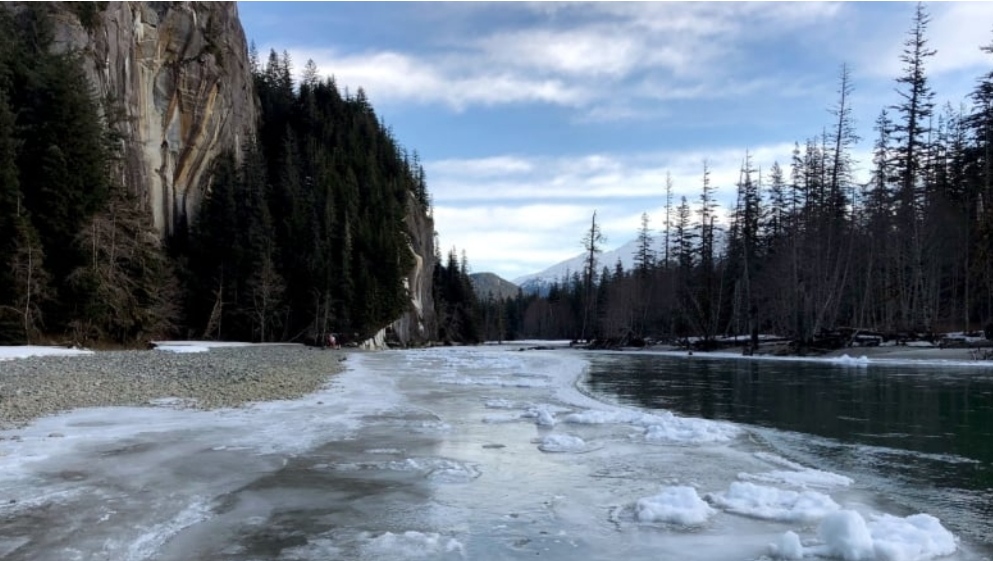Alaskan tribes seek historic legal recognition from B.C. gov’t for review of mining project
By Caitrin Pilkington
Coalition wants to be part of environmental review for Eskay Creek gold mine

The Unuk River is one of the transboundary watersheds of southeast Alaska.
An Alaska-based coalition of Indigenous governments has applied to be part of a B.C. environmental review process.
Representatives of the Southeast Alaska Indigenous Transboundary Commission say they’re concerned about the environmental impacts of a proposed project that would see work resume at Eskay Creek, a former open-pit gold mine. The mine, which mining company Skeena Resources hopes to revive, lies about 85 kilometres northwest of Stewart, B.C.
Skeena’s proposal would see workers make use of some of the old mine’s existing facilities, extracting up to three million tonnes of gold and silver ore per year. The proposed mine would be in operation for nine years.
If the Alaska coalition is successful, it would be the first time in history that U.S.-based tribes are granted the ability to participate this way in Canada.
The move would be possible thanks to a 2021 Supreme Court of Canada decision. The R. v. Desautel case determined Indigenous people in the U.S. or Greenland with traditional territories in Canada are entitled to some Canadian constitutional rights.
This case could be the first step toward understanding that ruling’s impact in Canada, said Dwight Newman, a law professor at the University of Saskatchewan who specializes in areas of Indigenous rights and constitutional law.
“I think this is exactly the kind of situation that we could foresee arising after the Desautel decision,” Newman said. “Arguments that an activity in Canada impacts an Indigenous people located across the border — in this case, in Alaska.”
The organization seeking input in B.C.’s Eskay Creek environmental assessment is the Southeast Alaska Indigenous Transboundary Commission, or SEITC.
It represents Alaskan Tlingit, Haida and Tsimshian tribes.
The group is concerned that the mine, and others like it, could impact the Unuk River watershed.
Louie Wagner Jr. is Tsimshian and Łingít, and has lived in Metlakatla, Alaska, all his life. He says mining in the transboundary region first came on his radar in the ’90s as it became more difficult to find fish.
“We started seeing all this debris and different garbage coming down the river, and we didn’t know where it was from,” he said. “We didn’t know we had a mine up the river until I was told by a pilot.”
Wagner Jr. said the pilot described flying over Brucejack mine and seeing a leaking tailings pond.
The SEITC is looking to establish that the Unuk River watershed, and by extension the Eskay Creek site, is part of their traditional territory. This would require them to be part of the consultation process under Canadian federal law.
“These international borders transact a watershed,” said Guy Archibald, executive director of the SEITC. “Nothing else in nature respects those lines. Not the salmon, the water, the wildlife, even the people. The watershed needs to be managed as an entire unit, not cut in half and placed under different management practices.”
The organization is hoping that this step will lead to productive conversations around shared management in the future.
“SEITC here is giving British Columbia and the Canadian government the opportunity to meet their duty under the constitution, under UNDRIPA, to bring in SEITC and their member tribes,” said Robert Lundberg, an associate attorney representing SEITC.
“They should be involved in this process.”
What the future holds
A complicating factor in the government’s decision could be that Eskay Creek also falls on the traditional territory of the Tahltan First Nation, which fully supports the Eskay Creek project.
The Tahltan First Nation did not respond to a request for comment by deadline.
Dwight Newman said he believes that element will likely complicate B.C.’s decision. But ultimately, Newman said, the government’s decision will rest on the strength of SEITC’s supporting evidence.
On Jan. 29, the organization submitted a study by the Alaska Heritage Institute, testimony from elders and ethnographic research to the B.C. government. Tribal leaders say the documents prove longstanding ties to the Unuk River watershed.
Regardless of the outcome, Newman said it’s unlikely to be the last.
“There’s just all kinds of complexities ahead,” Newman said. “The impact is going to depend on lots of different factors and different circumstances, but in essence, we’re looking at a new dimension to consultation where some of that will have to take place across international borders.”



